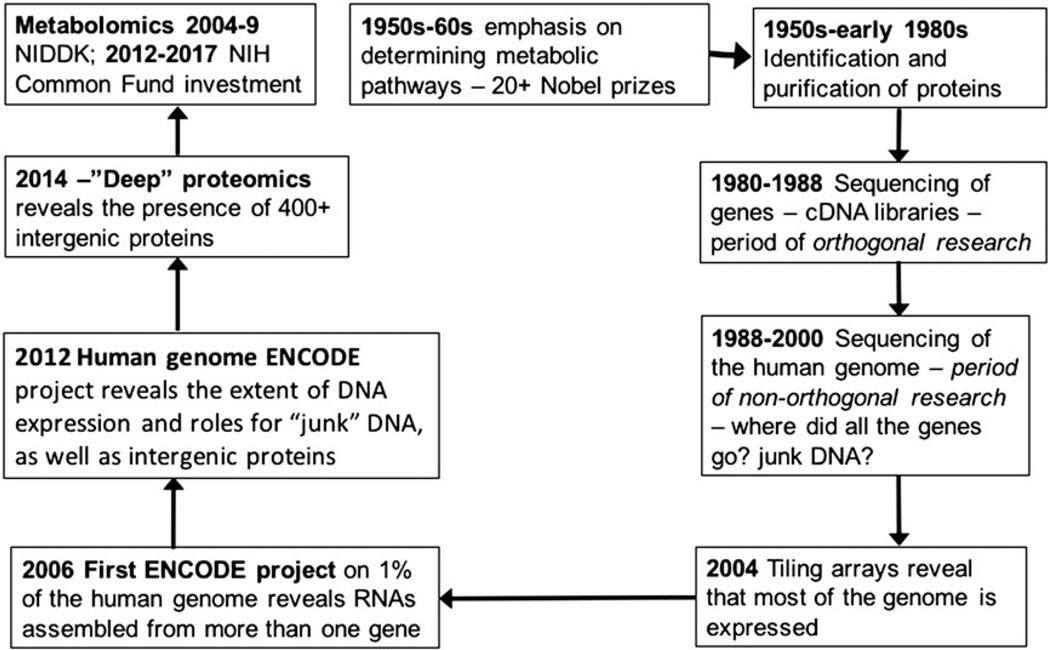Figure 1.
The cyclic nature of NIH-funded biomedical research. The initial interest and investigation of the metabolic basis of heart disease, endocrine disorders and cancer was replaced by focused studies on the enzymes and transporters responsible for the formation and distribution of metabolites. In turn, the genes responsible for these proteins were isolated and sequenced to identify their open reading frames. Then, as cDNA and other high-throughput methods became available, the task of sequencing the human and other genomes was undertaken. Using that information, oligonucleotides specific for each gene were attached to microarray chips. Similar technologies allowed the whole genome to be attached to microarrays. This revealed that most of the genome was transcribed to RNAs, with only small portion being messenger RNA. More careful re-sequencing of the human genome in the ENCODE project showed that some of the expressed RNAs were intergenic. In 2012, confirmation of an intergenic protein by mass spectrometer was reported. Now, over 400 intergenic proteins have been described. In 2004, NIH began its investment in metabolomics and returned to its early roots.

